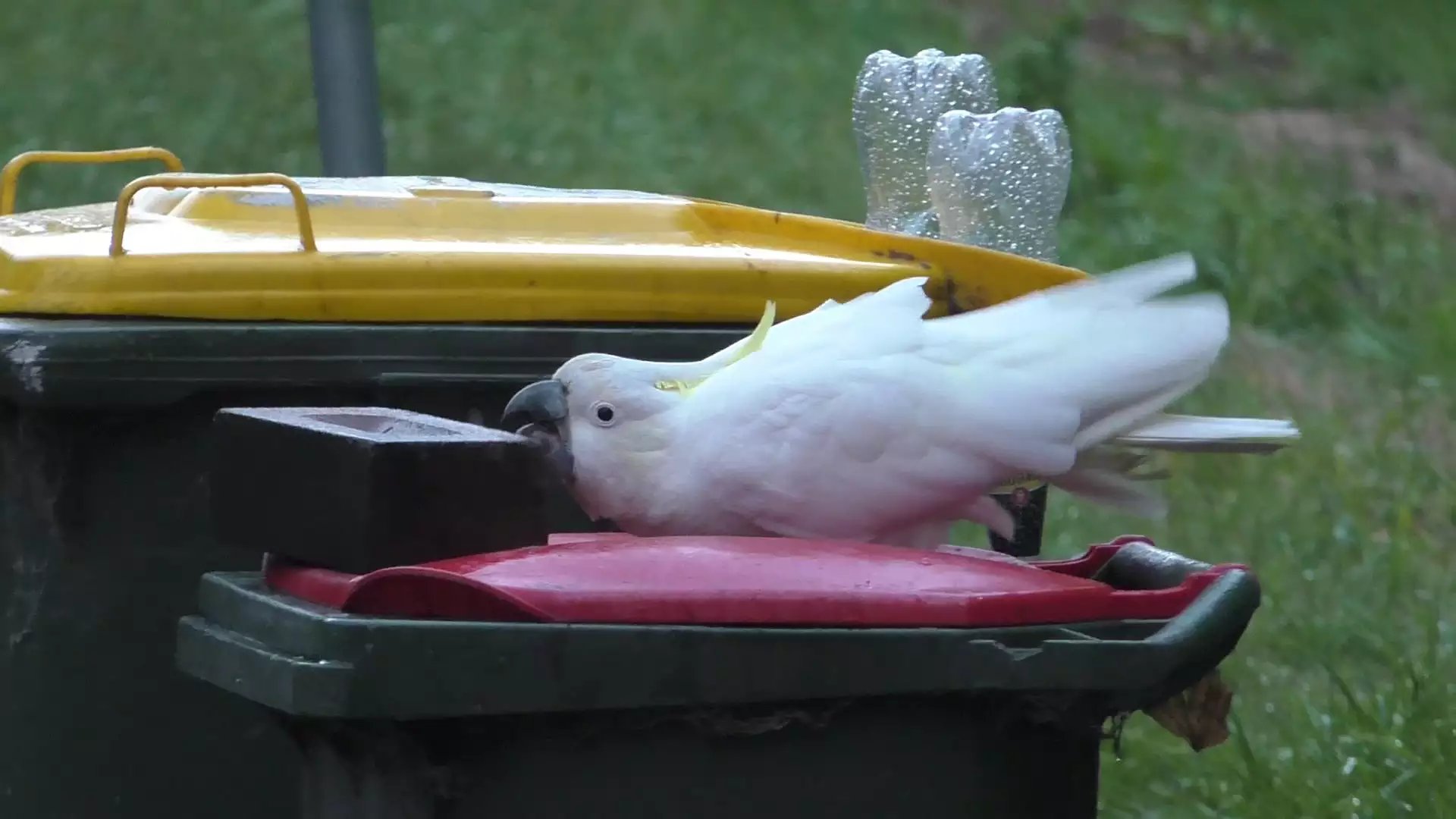

If Alfred Hitchcock were making horror movies today, he might want to consider a re-make of his 1963 film The Birds, set in the suburbs of Sydney, Australia. Sulfur-crested cockatoos (Cacatua galerita), an intelligent bird native to Australia are still in a continuing years long battle with humans over trash.
The birds have had plenty of time to practice breaking into neighborhood trash bins. They do so by by prying up the front, lifting the lid, walking around to the side of the can, and then flipping the lid back. This innovative garbage invasion technique is passed between birds and a new study published yesterday in Current Biology, outlines the shifting techniques of this “interspecies innovation arms race.” The study says the cockatoos have escalated this fight further by thwarting human made defenses like rocks and water bottles.
“When I first saw a video of the cockatoos opening the bins I thought it was such an interesting and unique behavior and I knew we needed to look into it,” said lead author Barbara Klump, a behavioral ecologist at the Max Planck Institute of Animal Behavior, in a press release.
The main motivation for these clever cockatoos is food waste—like humans, the cockatoos are big fans of carbs. “They really like bread,” said Klump.
[Related: Australian cockatoos are teaching each other to open trash cans.]
The study found that prying open a trash bin is a cockatoo community affair. A cockatoo learns how to bust into a bin by observing their friends cracking it open, and some cliques even have group specific methods. “The cockatoos learn the behavior from observing other cockatoos and within each group they sort of have their own special technique, so across a wide geographic range the techniques are more dissimilar,” Klump added.
The trash bin lids can’t be completely closed all of the time because they need to be able to open when tipped by the arm of a garbage truck. In a survey conducted by the researchers, the team found that residents tried numerous tactics to keep the birds out: placing heavy objects like bricks and stones on their bin lids, strapping bottles of water to the top, rigging ropes to prevent the lid from flipping, or using sticks to block the bin’s hinges. These tactics were switched out once the cockatoos outsmarted them. There is even an emerging market for cockatoo locks for garbage bins.

Ana Culic, the manager of the Loaf Cafe in Stanwell Park told Science Alert, “if we don’t close the bin right after throwing out the rubbish they’ll be in there. Cockatoos everywhere. Like, just rubbish all over the front area.” She also shared that her family resorted to placing a lock on their bin.
The café’s chef Matt Hoddo added, “They’re evolving. Yeah, like if you go back like five-ten years ago, they didn’t know how to open bins so they’re figuring stuff out.”
The study shows that this “arms race” is an example of social learning for both cockatoos and humans. “People come up with new protection methods on their own, but a lot of people actually learn it from their neighbors or people on their street, so they get their inspiration from someone else,” Klump said. In the survey, 64 percent of the human trash-can owners learned about new protection methods from other people, with 61 percent of the residents changing their lid securing strategies when the birds won out.
[Related: How to keep raccoons and possums away from your house.]
While the team won’t place any concrete bets on who the winner of this game of trash can chicken will be, they plan to look at how the cockatoos’ behavior varies from season to season as a next step. They also expect to see more of this kind of human-wildlife behavior in the future. Raccoons are one of the better known examples of this kind of constant trash talking and garbage battling in cities like Toronto and New York. States like Wyoming, Colorado, and Utah face this issue with a much bigger animal: bears.
“As cities expand, we will have more interactions with wildlife,” said Klump. “I’m hoping that there will be a better understanding and more tolerance for the animals that we share our lives with.”
